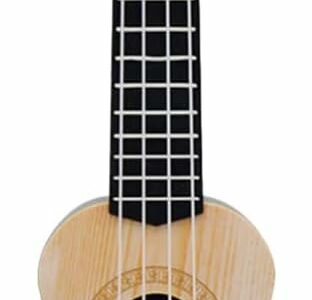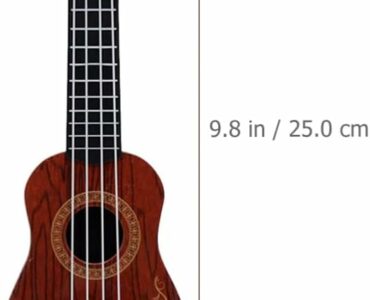
Pianos have been with us for over five hundred years now, so every time a musician wants to add some refinement or classic element to songs, they lean towards the piano. Moreover, let’s not forget how difficult this instrument is to learn, but it is now an essential part of musical history and culture.
There are many interesting facts about yet many still do not know them. Most of them will have you pausing for a moment and going, “Woah!” Therefore, we bring you some fun piano facts to give you good reading and learning time.
Table of Contents
1. Super Intricate Instrument
You may think the pianos appear simple enough; after all, there are just black and white keys you need to master. Nothing could be more wrong, folks! Piano encompasses over 12,000 parts, and 10,000 of them move. The crazy amount of its moving parts is the main reason why it is so hard to tune a piano.
2. The OG
Sure, you might know Bartolomeo Cristofori was the piano inventor in 1698 but did you know that one of the initial pieces is still sitting all pretty in the MET Museum in NYC? That made you go wow, right? We bet!
3. The Grandeur
When discussing fun piano facts, we cannot forget its splendor. The world’s grandest piano is the Challen Concert Grand. As the biggest piano, it is 11 feet long, weighing over one ton. Challen is so strong, with its strings so sturdy that they can hold up to 30 tons.
4. The Harmony King
For teaching students the phenomenon of harmony, teachers take to piano. This is how they teach students about “keyboard harmony.” It is the education of chords and all about their progression and movement.
Harmony is a rudimentary element of music theory, so it is like learning grammar to improve English. Harmony is also the main factor of the music structure. To understand it, one needs to learn harmony in music premise, and as the piano has 88 keys, it fits for this learning.
5. The Amazing Health Benefits
Playing the piano sounds like an impressive skill, but many do not know how pediatrics consider learning piano young as a fantastic growth activity. A study shows how it can help improve the child’s motor skills, enhance their memory, and boosts academics and self-esteem. For adults, tests reveal that pianists have low carpal tunnel, arthritis, or Alzheimer’s chances.
6. The Opulence
At Beijing Olympics in 2008, pianist Lang Lang wowed the world with the most stunning yet highly unusual piano – the Heintzman crafted completely from crystal. Interestingly, this opulent crystal piano was played only once at the games and sold for $3.22 million! This makes it the priciest and most luxurious piano ever.
7. The Sky Symphony
The peak altitude performance of a grand piano is at 16,227 ft, and Evelina De Lain holds the Guinness title at Singge La Pass in India in 2018. Evelina played a range of pieces while holding this concert in the clouds, like Polonaise and Chopin. She then performed her compositions.
8. The King
The piano is called the “King of Instruments,” and it got this moniker for multiple reasons. First, it covers the complete spectrum of any orchestra instrument, starting from the lowest notes to the highest. Next, it can play the melody plus the accompaniment simultaneously. Lastly, it is the biggest and the most versatile instrument in composing music.
9. The Original Name
‘Piano’ is just a nickname when the full Italian name of this instrument is ‘pianoforte.’ The instrument got its longer name due to its capacity to play notes quietly (piano) or loudly (forte).
10. The Great Debate
So is the piano from the string or percussion family? We are going to conclude this debate! Albeit all strings in the piano, it is a percussion musical instrument. Its hammers hit the strings to produce the sound, making the piano a member of the percussion family.
11. The Range
Many pianos are prepared to give them better and longer ranges. Among the highly respected is Bosendorfer, the famous maker, whose Imperial Grand Pianos feature a span capable of stretching 97 keys. Wondering how the range matters? The makers state it does magic with the instrument’s resonance.
12. Pedal Evolution
As pianos kept developing, so did the pedals, and now the modern ones have three: a soft or una cord pedal, the second is sostenuto pedal, and the third is the damper pedal.
13. Strings vs. Keys
You must be thinking if a piano has 88 keys, then strings should be the same, right? Nah. There are 230 strings! This is because each key has three strings made of steel. This gives the notes projection we love from pianos.
14. Keys Makeover
Piano keys keep going through makeovers. Initially, black keys were from sugar pine and white from ivories. Of course, the latter could not go on, so now different plastics are the choice for white keys.
15. Grand vs. Upright
As the sound production mechanisms in grand and upright piano are vastly different, the former has a much faster response time and better quality than the latter as gravity makes the keys go back in place.
16. Bed Piano
To keep the passion going, bed pianos came for the bedridden, confined, or just lazy in 1935.
Conclusion
The piano is a fantastic instrument with a long and amazing history, and these are just some of the facts. These facts boosted your interest a tad more, right? We know we had fun writing about them! We hope you enjoyed learning a little more about interesting facts about piano and you can make them a topic of discussion with your fellow piano buffs.










Add comment